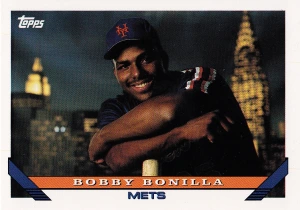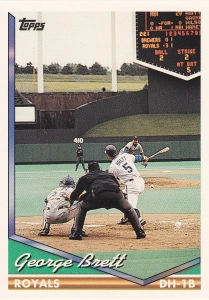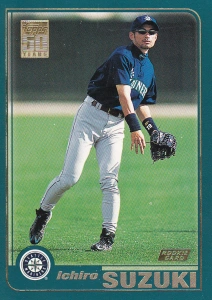In honor of 2012 Heritage, I’ll go through the year it honors – 1963 in baseball.
Highlights and Events:
1962 was a year of new beginnings for teams (Mets, Astros, Dodger Stadium). But 1963 was notable for a completely new minor league system. The American Association folded after 61 seasons, and the B, C and D levels were abolished. Most of those teams moved to A classification, while a number of A-level teams moved up to AA. The Appalachian league became Rookie League baseball.
It was also a beginning for a pretty notable new player. Young Pete Rose got his first base hit on April 13th, and accumulated the first 170 of his record-setting career to win the Rookie of the Year award going away.
The Reds were good, finishing 10 games over .500, but they were stuck in the middle of the league with about 5 other teams. Among those teams were Milwaukee, led by Hank Aaron who led the circuit with 44 HR and 130 RBI. The defending NL champion Giants were among this group, as well – Willie McCovey (44), Willie Mays (38) and Orlando Cepeda (34) combined for 116 homers. Juan Marichal also won 25 games for the Giants and led the majors with 321 innings. But while the Braves, Giants, Reds, Phillies and Cubs were good, they were all bunched together between 82 and 88 wins.
 If Rose was the new face in the baseball landscape, another great was in his last season. Rose would eventually break some of Stan Musial’s National League records – and by 1963, Stan Musial was about to hang up his cleats. After having a very good 1962 season at the age of 41, Musial’s numbers declined in ’63, and he wasn’t an everyday player any more. He retired with 3,630 hits – exactly half came both at home and on the road.
If Rose was the new face in the baseball landscape, another great was in his last season. Rose would eventually break some of Stan Musial’s National League records – and by 1963, Stan Musial was about to hang up his cleats. After having a very good 1962 season at the age of 41, Musial’s numbers declined in ’63, and he wasn’t an everyday player any more. He retired with 3,630 hits – exactly half came both at home and on the road.
Musial got one last appearance in an All-Star game, his record 24th. From 1959-1962, there were 2 All-Star games. However, at the beginning of the 1963 season, the MLBPA and MLB agreed to move back to just 1 game and decided to split up the revenue differently. Mays won the MVP award; his 2 RBI, 2 runs and 2 stolen bases helped the NL to a 5-3 win.
By September, the Dodgers and Cardinals were the only true contenders. The Dodgers were in first for the entire 2nd half of the season, but the Cardinals did emerge and get within one game of LA, but the Dodgers pitching was too strong, and they won 99 games to take the division.
The Dodgers had decent hitters like defending MVP Maury Wills (.302, 40 SB) and batting champion Tommy Davis (.326). But pitching was their strong suit. Aging Johnny Podres won 14 games, and Don Drysdale followed up a Cy Young season with 19 wins. But nobody was a bigger baseball story in 1963 than Sandy Koufax. Koufax threw a no-hitter at Dodger Stadium on May 11th against the defending champion Giants. From there, he had one of the greatest seasons in modern pitching history, going 25-5 with 11 shutouts, 306 strikeouts, a 1.88 ERA and a WHIP under 0.9. He won the Cy Young and NL MVP, leading the Dodgers into the World Series against their longtime rival Yankees.
The American League was even less competitive. In June, the defending world champion Yankees pulled away from the pack to stay, and after the first week of July, not team got within 5 games of the Bronx Bombers, who won 104 games and finished 10.5 games clear of the 2nd place White Sox.
The White Sox and Twins both won over 90 games. Chicago was led by a solid pitching staff. Future Hall of Famer Hoyt Wilhelm pitched 136 relief innings, “saving” 21 games (though the stat wasn’t official at this point) with a 2.64 ERA. Gary Peters won 19 games with a league-leading 2.33 ERA, while his teammate Juan Pizzaro was second at 2.39. The Twins had a solid lineup that featured Harmon Killebrew (ML-leading 45 HR and AL-leading .555 SLG), Bob Allison (led AL with 99 R and .911 OPS), Jimmie Hall and Earl Battey. And Carl Yastrzemski had a very good season despite the fact that Boston bottomed out in the second half. He led the league in hits, walks, doubles, average and OBP.
Elston Howard of the Yankees, however, took home the MVP award. He hit 28 homers while calling pitches for a staff that had Whitey Ford (24 wins, 2.74 ERA, AL leader in innings), Jim Bouton (21-7, 2.53 ERA), Ralph Terry (17-15, 3.22) and Al Downing (13-5, 2.56 ERA). The lineup was solid even with the declining production of Roger Maris and the fact that Yankee great Mickey Mantle only managed 213 plate appearances due to injury.
The American League didn’t have quite the exciting finish the senior circuit did. The defending World Champion Yankees didn’t run away with the division, either. The Twins, in only their second year in Minnesota, kept it close and finished only 5 games back. Harmon Killebrew of the Twins had an argument for the MVP – he led the AL with 48 home runs and 126 RBI. But Mickey Mantle took home the aware despite only playing 123 games. He led the majors in OBP and the AL in SLG, and still managed 30 homers. His slugging teammate Roger Maris followed up his record-setting 61 HR season with 33 homers and 100 RBI.
There were some interesting feats during the year. Koufax wasn’t the only pitcher to get on the no-hitter bandwagon. Marichal threw a 1-0 no-no against Houston in June. The Colt .45’s had one of their own, however, as Don Nottebart threw the franchise’s first no-hitter (in the team’s 2nd year of existence) in May.
Four players on the Indians hit consecutive home runs (Woodie Held, Pedro Ramos, Tito Francona and Larry Brown). This was only the 2nd time in ML history this had occurred – it’s happened 5 times since then. Up to that point, it had only happened in Ohio. The Tribe did it at home in Cleveland Stadium, while the first time was the Milwaukee Braves, who did it against Cincinnati in Crosley Field.
The three Alou brothers all batted consecutively in a game for the Giants on September 10th. This happened in a pretty interesting way. Jesus made his Major League debut by pinch-hitting in the 8-spot of the lineup to lead off the top of the 8th. After he grounded out, Matty, who’d been a reserve outfielder and pinch hitter for 3 seasons at this point, pinch-hit for the pitcher’s spot and struck out. Felipe Alou, who was the team’s starting right fielder and leadoff hitter, then came up at the top of the order. He grounded out to the pitcher for what had to be one of the most interesting 1-2-3 innings in baseball history! Five days later, they would make history again as the three all played in the outfield at the same time.

After saying goodbye to Musial, baseball also said goodbye to the Polo Grounds at the end of the season. The site directly across the Northeast corner of Central Park was originally used for – as you’d expect – polo! Baseball was first played there in 1880, when the New York Metropolitans were formed. The first version of the “Mets” began play in 1880 as an independent team. In 1883, they joined the American Association and the owners of the team formed the New York Giants to compete in the National League. Renovations in the early years meant that a few different structures existed on the site, but the final version of the Polo Grounds was built in 1911. After the Giants left for San Francisco in the 50’s, the Mets became the tenants in 1962. But the Mets played the final regular season game there on September 18th in a 6-1 loss to the Phillies.
 On October 12, 1963, one last game was played in the Polo Grounds. A unique event, a Hispanic All-Star Game pitting the the Latin stars from the American and National Leagues against each other a week after the finale of the World Series. Juan Marichal started for the NL, striking out 6 in 4 innings as the NL won, 5-2. Marichal, Orlando Cepeda, and Vic Power received an award before the game, which also featured greats like Roberto Clemente, Luis Aparicio, Minnie Minoso, Tony Oliva, and Zoilo Versalles. Here’s a link to the box score for the game.
On October 12, 1963, one last game was played in the Polo Grounds. A unique event, a Hispanic All-Star Game pitting the the Latin stars from the American and National Leagues against each other a week after the finale of the World Series. Juan Marichal started for the NL, striking out 6 in 4 innings as the NL won, 5-2. Marichal, Orlando Cepeda, and Vic Power received an award before the game, which also featured greats like Roberto Clemente, Luis Aparicio, Minnie Minoso, Tony Oliva, and Zoilo Versalles. Here’s a link to the box score for the game.
The last sporting event played there was a 19-10 NY Jets loss to the Buffalo Bills.
Milestones and records reached in 1963 included:
- Warren Spahn became the all-time leader in wins by a left-handed pitcher. On April 11th, he won his 328th game to pass Eddie Plank.
- Duke Snider, now with the Mets, hit his 400th career home run off Bob Purkey at Cincinnati’s Crosley Field on June 14th.
- Early Wynn, back with the Indians, won his 300th and final game on July 13th. The win was his only victory that year; Wynn had the longest timeframe for any pitcher between win #299 and #300 – a span of 9 months and 7 starts (as well as a few relief appearances). Wynn pitched almost exclusively in relief that season, though his first start was a complete game 2-0 loss, and he did manage an excellent 2.28 ERA in 55 innings. He retired at the end of that year and became the Tribe’s pitching coach.
- On August 27, Mays hit his 400th home run at Candlestick Park off Curt Simmons of the Cardinals.
I’d say Willie Mays was the best player in the game at this point, with Hank Aaron close at his heels. Mickey Mantle had been the best player in baseball since the mid 50’s – until now. By 1962, Mays had essentially caught up with him, and after 1963 – there was no debate – Mays and Aaron would both pass him into the debate of the best player in the game. Mantle was still great when he played – but Mays and Aaron were great when they played and they played all the time.
Just like the 1962 season, I think any question of best pitcher in baseball was down to Hall of Fame pitchers – Don Drysdale and Warren Spahn. Spahn was the best pitcher in the game prior to 1962, and then had been for a number of years. Drysdale won the Cy Young in 1962 with a great 25-win season, but Spahn still had a very good year (though he had very little run support) and Drysdale didn’t quite catch him in my mind. I generally look at how pitchers have done over the past 3-5 years. I can’t change it from Spahn in 1963 – he had one last great year. Spahn went 23-7 with a 2.60 ERA and again led the majors with 22 complete games. Drysdale had a similar season to what Spahn had in 1962 – he had a 2.63 ERA and pitched over 300 innings, but went 19-17 due to poor run support. Sandy Koufax had the best season in 1963 – but, with all apologies, at this point, he’d had one good season and one truly great season. At the end of 1963, that’s just not the resume yet to have thought he was better than what Drysdale or Spahn had strung together.
Read below for the World Series summary.
Read the rest of this entry »












































